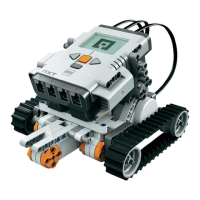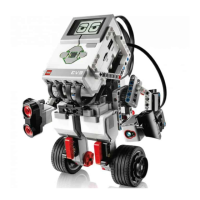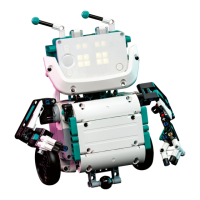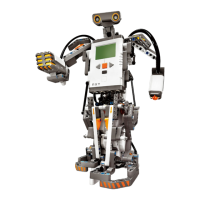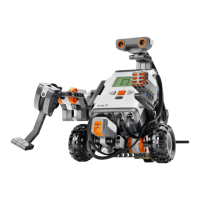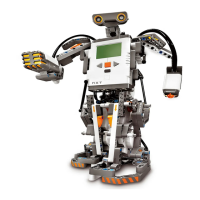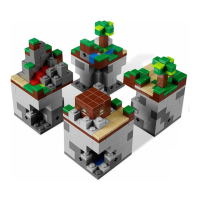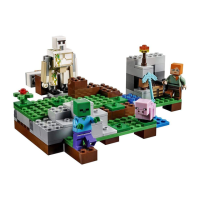Page 9
screen
The RCX includes a small LCD screen. This screen displays helpful information such as sensor readings and output port settings.
sound
The RCX is capable of producing beeps of different frequencies.
front panel buttons
Four buttons are provided to control the RCX. You can select a program, start it, and stop it. You can also view the values of attached sensors or check the settings on output ports.
IR communications link
The RCX communicates with your PC through the IR (infrared) link, similar to that on a television remote control. It can also communicate with other RCXs through this link.
About the Software
The CD-ROM that comes with RIS contains a lot of software. Basically it can all be distilled down to three pieces:
documentation
The RIS software includes extension tutorials about setting up and programming the RCX. These include animations, movies, and detailed, step-by-step instructions. When you first begin using
the software, it is in guided mode, which means the software tells you what to do next. This is a good way to get used to the software and the RCX.
programming environment
The RIS software includes an environment you can use to write programs that will run on the RCX. In the computer world, this technique is called cross-compiling, meaning you write a program
on one computer that you intend to run on another. In this case, you use your PC to write a program that will be run on the RCX. As you'll see, there are many ways to write programs for your
RCX; the official environment that comes with RIS is only one of them. This book will introduce you to four powerful alternate programming environments.
program downloader
Once you've written a program for the RCX, you need to know how to run it. The RIS software includes a program downloader for this purpose. The program downloader is a special application
that runs on your PC. It knows how to transmit your robot programs into the RCX using the IR link.
Page 10
What About MacOS and Linux?
Currently, the software that comes with RIS runs only on Windows. If you have MacOS or
Linux, however, you can still program your robots, just not with the official software. The
best option, at least to get started, is NQC, which is described in Chapter 4. Appendix A,
Finding Parts and Programming Environments, lists the different packages that are
available. If you really want visualstyle programming (like RCX Code), you can purchase
ROBOLAB, which provides a similar (but more powerful) environment on MacOS.
There's one final wrinkle if you want to program from MacOS: you'll need a suitable cable.
The following web page describes the issues of programming the RCX from MacOS,
including cables:
http://www.enteract.com/~dbaum/lego/macmind/index.html.
You can purchase a Macintosh IR tower cable from Pitsco LEGO DACTA for $15US. See
Appendix A for details.
Expansion Sets

